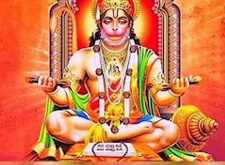इनके आश्रम हरिद्वार और दूसरे तीर्थों के दूरदराज इलाकों में हैं जहां ये आम जनजीवन से दूर कठोर अनुशासन में रहते हैं। इनके गुस्से के बारे में प्रचलित किस्से कहानियां भी भीड़ को इनसे दूर रखती हैं। लेकिन वास्तविकता यह है कि यह शायद ही किसी को नुकसान पहुंचाते हों। हां, लेकिन अगर बिना कारण अगर कोई इन्हें उकसाए या तंग करे तो इनका क्रोध भयानक हो उठता है। कहा जाता है कि भले ही दुनिया अपना रूप बदलती रहे लेकिन शिव और अग्नि के ये भक्त इसी स्वरूप में रहेंगे।
नागा साधु तीन प्रकार के योग करते हैं जो उनके लिए ठंड से निपटने में मददगार साबित होते हैं। वे अपने विचार और खानपान, दोनों में ही संयम रखते हैं। नागा साधु एक सैन्य पंथ है और वे एक सैन्य रेजीमेंट की तरह बंटे हैं। त्रिशूल, तलवार, शंख और चिलम से वे अपने सैन्य दर्जे को दर्शाते हैं।
ये साधु प्रायः कुम्भ में दिखायी देते हैं। नागा साधुओं को लेकर कुंभ मेले में बड़ी जिज्ञासा और कौतुहल रहता है, खासकर विदेशी पर्यटकों में। कोई कपड़ा ना पहनने के कारण शिव भक्त नागा साधु दिगंबर भी कहलाते हैं, अर्थात आकाश ही जिनका वस्त्र हो। कपड़ों के नाम पर पूरे शरीर पर धूनी की राख लपेटे ये साधु कुम्भ मेले में सिर्फ शाही स्नान के समय ही खुलकर श्रद्धालुओं के सामने आते हैं। आमतौर पर मीडिया से ये दूरी ही बनाए रहते हैं।
अधिसंख्य नागा साधु पुरुष ही होते हैं, कुछ महिलायें भी नागा साधु हैं पर वे सार्वजनिक रूप से सामान्यतः नग्न नहीं रहती अपितु एक गेरुवा वस्त्र लपेटे रहती हैं।
इतिहास
भारतीय सनातन धर्म के वर्तमान स्वरूप की नींव आदिगुरू शंकराचार्य ने रखी थी। शंकर का जन्म 5वीं शताब्दी ईसा पूर्व के में हुआ था जब भारतीय जनमानस की दशा और दिशा बहुत बेहतर नहीं थी। भारत की धन संपदा से खिंचे तमाम आक्रमणकारी यहाँ आ रहे थे। कुछ उस खजाने को अपने साथ वापस ले गए तो कुछ भारत की दिव्य आभा से ऐसे मोहित हुए कि यहीं बस गए, लेकिन कुल मिलाकर सामान्य शांति-व्यवस्था बाधित थी। ईश्वर, धर्म, धर्मशास्त्रों को तर्क, शस्त्र और शास्त्र सभी तरह की चुनौतियों का सामना करना पड़ रहा था। ऐसे में शंकराचार्य ने सनातन धर्म की स्थापना के लिए कई कदम उठाए जिनमें से एक था देश के चार कोनों पर चार पीठों का निर्माण करना। यह थीं गोवर्धन पीठ, शारदा पीठ, द्वारिका पीठ और ज्योतिर्मठ पीठ। इसके अलावा आदिगुरू ने मठों-मन्दिरों की सम्पत्ति को लूटने वालों और श्रद्धालुओं को सताने वालों का मुकाबला करने के लिए सनातन धर्म के विभिन्न संप्रदायों की सशस्त्र शाखाओं के रूप में अखाड़ों की स्थापना की शुरूआत की।
आदिगुरू शंकराचार्य को लगने लगा था सामाजिक उथल-पुथल के उस युग में केवल आध्यात्मिक शक्ति से ही इन चुनौतियों का मुकाबला करना काफी नहीं है। उन्होंने जोर दिया कि युवा साधु व्यायाम करके अपने शरीर को सुदृढ़ बनायें और हथियार चलाने में भी कुशलता हासिल करें। इसलिए ऐसे मठ बने जहाँ इस तरह के व्यायाम या शस्त्र संचालन का अभ्यास कराया जाता था, ऐसे मठों को अखाड़ा कहा जाने लगा। आम बोलचाल की भाषा में भी अखाड़े उन जगहों को कहा जाता है जहां पहलवान कसरत के दांवपेंच सीखते हैं। कालांतर में कई और अखाड़े अस्तित्व में आए।
शंकराचार्य ने अखाड़ों को सुझाव दिया कि मठ, मंदिरों और श्रद्धालुओं की रक्षा के लिए जरूरत पडऩे पर शक्ति का प्रयोग करें। इस तरह बाह्य आक्रमणों के उस दौर में इन अखाड़ों ने एक सुरक्षा कवच का काम किया। कई बार स्थानीय राजा-महाराज विदेशी आक्रमण की स्थिति में नागा योद्धा साधुओं का सहयोग लिया करते थे। इतिहास में ऐसे कई गौरवपूर्ण युद्धों का वर्णन मिलता है जिनमें ४० हजार से ज्यादा नागा योद्धाओं ने हिस्सा लिया। अहमद शाह अब्दाली द्वारा मथुरा-वृन्दावन के बाद गोकुल पर आक्रमण के समय नागा साधुओं ने उसकी सेना का मुकाबला करके गोकुल की रक्षा की।
वर्तमान स्थिति
भारत की आजादी के बाद इन अखाड़ों ने अपना सैन्य चरित्र त्याग दिया। इन अखाड़ों के प्रमुख ने जोर दिया कि उनके अनुयायी भारतीय संस्कृति और दर्शन के सनातनी मूल्यों का अध्ययन और अनुपालन करते हुए संयमित जीवन व्यतीत करें। इस समय १३ प्रमुख अखाड़े हैं जिनमें प्रत्येक के शीर्ष पर महन्त आसीन होते हैं। इन प्रमुख अखाड़ों का संक्षिप्त विवरण इस प्रकार हैं:-
१. श्री निरंजनी अखाड़ा:- यह अखाड़ा ८२६ ईस्वी में गुजरात के मांडवी में स्थापित हुआ था। इनके ईष्ट देव भगवान शंकर के पुत्र कार्तिकस्वामी हैं। इनमें दिगम्बर, साधु, महन्त व महामंडलेश्वर होते हैं। इनकी शाखाएं प्रयागराज, उज्जैन, हरिद्वार, त्र्यंबकेश्वर व उदयपुर में हैं।
२. श्री जूनादत्त या जूना अखाड़ा:- यह अखाड़ा ११४५ में उत्तराखण्ड के कर्णप्रयाग में स्थापित हुआ। इसे भैरव अखाड़ा भी कहते हैं। इनके ईष्ट देव रुद्रावतार दत्तात्रेय हैं। इसका केंद्र वाराणसी के हनुमान घाट पर माना जाता है। हरिद्वार में मायादेवी मंदिर के पास इनका आश्रम है। इस अखाड़े के नागा साधु जब शाही स्नान के लिए संगम की ओर बढ़ते हैं तो मेले में आए श्रद्धालुओं समेत पूरी दुनिया की सांसें उस अद्भुत दृश्य को देखने के लिए रुक जाती हैं।आजकल इनके पीठाधीश्वर स्वामी अवधेस आनंद गिरी महाराज है
३. श्री महानिर्वाण अखाड़ा:- यह अखाड़ा ६७१ ईस्वी में स्थापित हुआ था, कुछ लोगों का मत है कि इसका जन्म बिहार-झारखण्ड के बैजनाथ धाम में हुआ था, जबकि कुछ इसका जन्म स्थान हरिद्वार में नील धारा के पास मानते हैं। इनके ईष्ट देव कपिल महामुनि हैं। इनकी शाखाएं इलाहाबाद, हरिद्वार, उज्जैन, त्र्यंबकेश्वर, ओंकारेश्वर और कनखल में हैं। इतिहास के पन्ने बताते हैं कि १२६० में महंत भगवानंद गिरी के नेतृत्व में २२ हजार नागा साधुओं ने कनखल स्थित मंदिर को आक्रमणकारी सेना के कब्जे से छुड़ाया था।वर्षों प्राचीन पाशुपत परंपरा से उज्जैन स्थित महाकाल ज्योतिर्लिंग पर नित्य प्रति इसी अखाडे के पुरी नामा नागा साधुओं के महंत भस्म चढाते आ रहे हैं जब मराठा शासनकाल में मंदिर का जीर्णोद्धार हुआ उस समय मं रामेश्वर पुरी थे उनके बाद नृसिंह पुरी मया पुरी राम पुरी भागीरथ पुरी गोपाल पुरी हेम पुरी शंकर पुरी भैरव पुरी रेवांगिर पुरी प्रकाश पुरी और वर्तमान में महंत दया पुरी हैं जो कि महाकाल मंदिर परिसर में ही निवास करते हैं और लगभग पांच हजार वर्षों प्राचीन परंपरा का सतत् पालन कर रहे हैं
४. श्री अटल अखाड़ा:- यह अखाड़ा ५६९ ईस्वी में गोंडवाना क्षेत्र में स्थापित किया गया। इनके ईष्ट देव भगवान गणेश हैं। यह सबसे प्राचीन अखाड़ों में से एक माना जाता है। इसकी मुख्य पीठ पाटन में है लेकिन आश्रम कनखल, हरिद्वार, इलाहाबाद, उज्जैन व त्र्यंबकेश्वर में भी हैं।
५. श्री आह्वान अखाड़ा:- यह अखाड़ा ६४६ में स्थापित हुआ और १६०३ में पुनर्संयोजित किया गया। इनके ईष्ट देव श्री दत्तात्रेय और श्री गजानन हैं। इस अखाड़े का केंद्र स्थान काशी है। इसका आश्रम ऋषिकेश में भी है। स्वामी अनूपगिरी और उमराव गिरी इस अखाड़े के प्रमुख संतों में से हैं।
6. श्री आनंद अखाड़ा:- यह अखाड़ा ८५५ ईस्वी में मध्यप्रदेश के बेरार में स्थापित हुआ था। इसका केंद्र वाराणसी में है। इसकी शाखाएं इलाहाबाद, हरिद्वार, उज्जैन में भी हैं।
७. श्री पंचाग्नि अखाड़ा:- इस अखाड़े की स्थापना ११३६ में हुई थी। इनकी इष्ट देव गायत्री हैं और इनका प्रधान केंद्र काशी है। इनके सदस्यों में चारों पीठ के शंकराचार्य, ब्रहमचारी, साधु व महामंडलेश्वर शामिल हैं। परंपरानुसार इनकी शाखाएं इलाहाबाद, हरिद्वार, उज्जैन व त्र्यंबकेश्वर में हैं।
८. श्री नागपंथी गोरखनाथ अखाड़ा:- यह अखाड़ा ईस्वी ८६६ में अहिल्या-गोदावरी संगम पर स्थापित हुआ। इनके संस्थापक पीर शिवनाथजी हैं। इनका मुख्य दैवत गोरखनाथ है और इनमें बारह पंथ हैं। यह संप्रदाय योगिनी कौल नाम से प्रसिद्ध है और इनकी त्र्यंबकेश्वर शाखा त्र्यंबकंमठिका नाम से प्रसिद्ध है।
९. श्री वैष्णव अखाड़ा:- यह बालानंद अखाड़ा ईस्वी १५९५ में दारागंज में श्री मध्यमुरारी में स्थापित हुआ। समय के साथ इनमें निर्मोही, निर्वाणी, खाकी आदि तीन संप्रदाय बने। इनका अखाड़ा त्र्यंबकेश्वर में मारुति मंदिर के पास था। १८४८ तक शाही स्नान त्र्यंबकेश्वर में ही हुआ करता थाए परंतु १८४८ में शैव व वैष्णव साधुओं में पहले स्नान कौन करे इस मुद्दे पर झगड़े हुए। श्रीमंत पेशवाजी ने यह झगड़ा मिटाया। उस समय उन्होंने त्र्यंबकेश्वर के नजदीक चक्रतीर्था पर स्नान किया। १९३२ से ये नासिक में स्नान करने लगे। आज भी यह स्नान नासिक में ही होता है।
१०. श्री उदासीन पंचायती बड़ा अखाड़ा:- यह अखाड़ा १९१० में स्थापित हुआ। इस संप्रदाय के संस्थापक श्री चंद्रआचार्य उदासीन हैं। इनमें सांप्रदायिक भेद हैं। इनमें उदासीन साधु, मंहत व महामंडलेश्वरों की संख्या ज्यादा है। उनकी शाखाएं शाखा प्रयाग, हरिद्वार, उज्जैन, त्र्यंबकेश्वर, भदैनी, कनखल, साहेबगंज, मुलतान, नेपाल व मद्रास में है।
११. श्री उदासीन नया अखाड़ा:- यह अखाड़ा १७१० में स्थापित हुआ। इसे बड़ा उदासीन अखाड़ा के कुछ सांधुओं ने विभक्त होकर स्थापित किया। इनके प्रवर्तक मंहत सुधीरदासजी थे। इनकी शाखाएं प्रयागए हरिद्वार, उज्जैन, त्र्यंबकेश्वर में हैं।
१२. श्री निर्मल पंचायती अखाड़ा:- यह अखाड़ा १७८४ में स्थापित हुआ। १७८४ में हरिद्वार कुंभ मेले के समय एक बड़ी सभा में विचार विनिमय करके श्री दुर्गासिंह महाराज ने इसकी स्थापना की। इनकी ईष्ट पुस्तक श्री गुरुग्रन्थ साहिब है। इनमें सांप्रदायिक साधु, मंहत व महामंडलेश्वरों की संख्या बहुत है। इनकी शाखाएं प्रयाग, हरिद्वार, उज्जैन और त्र्यंबकेश्वर में हैं।
१३. निर्मोही अखाड़ा:- निर्मोही अखाड़े की स्थापना १७२० में रामानंदाचार्य ने की थी। इस अखाड़े के मठ और मंदिर उत्तर प्रदेश, उत्तराखण्ड, मध्यप्रदेश, राजस्थान, गुजरात और बिहार में हैं। पुराने समय में इसके अनुयायियों को तीरंदाजी और तलवारबाजी की शिक्षा भी दिलाई जाती थी। ऐसा भी माना जाता है कि प्राचीन काल में लोमश नाम के ऋषि थे जिनकी आयू अखंड है कहते है जब एक हजार ब्रह्मा समाप्त होते है तो उनके शरीर का एक रोम गिरता है। आचार्य लोमश ऋषि के ने भगवान शंकर के कहने पर गुरू परंपरा पर तंत्र शास्त्र पर आधारित सबसे पहले आगम अखाडे की स्थापना की। जो सबसे प्राचीन है विश्व में जिसका मुख्ययालय वर्त्तमान मे हिमालय मे कही है। आगम अखाडे के साधू बहुत ही रहस्यमयी होते है,पूजा ध्यान करते हुऐ वो भूमि का त्याग कर अधर मे होते है
नागा बनने की प्रक्रिया
नागा साधु बनने की प्रक्रिया कठिन तथा लम्बी होती है। नागा साधुओं के पंथ में शामिल होने की प्रक्रिया में लगभग छह साल लगते हैं। इस दौरान नए सदस्य एक लंगोट के अलावा कुछ नहीं पहनते। कुंभ मेले में अंतिम प्रण लेने के बाद वे लंगोट भी त्याग देते हैं और जीवन भर यूँ ही रहते हैं। कोई भी अखाड़ा अच्छी तरह जाँच-पड़ताल कर योग्य व्यक्ति को ही प्रवेश देता है। पहले उसे लम्बे समय तक ब्रह्मचारी के रूप में रहना होता है, फिर उसे महापुरुष तथा फिर अवधूत बनाया जाता है। अन्तिम प्रक्रिया महाकुम्भ के दौरान होती है जिसमें उसका स्वयं का पिण्डदान तथा दण्डी संस्कार आदि शामिल होता है।
English Translation
Their ashrams are in the remote areas of Haridwar and other shrines where they live in strict discipline away from ordinary life. Popular stories about his anger also keep the crowd away from him. But the reality is that it rarely harms anyone. Yes, but if someone instigates or harasses them without any reason, their anger becomes terrible. It is said that even if the world keeps changing its form, these devotees of Shiva and Agni will remain in this form.
Naga sadhus perform three types of yoga which help them to cope with the cold. He is restrained both in his thoughts and in his food. The Naga Sadhus are a military cult and are divided into a military regiment. They represent their military status with trident, sword, conch and chillum.
These monks are often seen in Aquarius. There is great curiosity and curiosity in the Kumbh Mela with Naga sadhus, especially among foreign tourists. Because of not wearing any cloth, Shiva devotees are also called Naga Sadhus Digambara, that is, the sky is the only garment. In the name of clothes, these sadhus, who have wrapped ashes of fumigation all over the body, openly come in front of the devotees at the Kumbh fair only during the royal bath. Usually, they keep their distance from the media.
Most Naga monks are men, some women are also Naga monks, but they do not normally remain naked in public but wear a uterine cloth.
history
The foundation of the present form of Indian Sanatana Dharma was laid by Adiguru Shankaracharya. Shankar was born in the 5th century BC when the condition and direction of the Indian public was not much better. All the invaders pulled from the wealth of India were coming here. Some took that treasure back with them, some were so enamored with the divine aura of India that it settled here, but overall the general peace was disturbed. God, religion, theology were facing all kinds of challenges like logic, weapons and scriptures. In such a situation, Shankaracharya took many steps to establish Sanatan Dharma, one of which was to build four benches on the four corners of the country. These were Govardhan Peeth, Sharada Peeth, Dwarka Peeth and Jyotirmath Peeth. Apart from this, Adiguru started the establishment of the akhadas as armed branches of various sects of Sanatan Dharma to fight against those who looted the wealth of the monasteries and temples and persecuted the devotees.
Adiguru Shankaracharya began to feel that in that era of social upheaval, it is not enough to meet these challenges only with spiritual power. He emphasized that young sadhus should strengthen their body by exercising and also get skill in wielding arms. Therefore, such monasteries were built where such exercises or weapon operations were practiced, such monasteries came to be called akhada. In common parlance, the arena is also called the place where wrestlers learn workout tricks. Later, many more akharas came into existence.
Shankaracharya suggested to the akhadas to use the power if needed in order to protect the monasteries, temples and devotees. Thus, in those times of external attacks, these arenas acted as a protective shield. Many times the local King-Maharaj used to take the support of Naga warrior sadhus in the event of foreign invasion. Many such glorious wars are described in history in which more than 70 thousand Naga warriors took part. At the time of the invasion of Gokul after Mathura-Vrindavan by Ahmad Shah Abdali, Naga sadhus fought Gokul to protect his army.
present situation
After the independence of India, these Akharas renounced their military character. The head of these akharas emphasized that his followers should live a restrained life, studying and adhering to the eternal values of Indian culture and philosophy. At present, there are 13 major arenas with Mahantas at the top of each. A brief description of these major akharas is as follows: –
1. Sri Niranjani Arena: – This arena was established in Mandvi, Gujarat in 626 AD. His Ishta Dev is Kartikaswamy, son of Lord Shankar. These include Digambar, Sadhu, Mahant and Mahamandaleshwar. They have branches in Prayagraj, Ujjain, Haridwar, Trimbakeshwar and Udaipur.
2. Shri Junadatta or Juna Arena: – This arena was established in 1165 at Karnprayag in Uttarakhand. It is also called Bhairava Arena. His Ishta Dev is Rudravatar Dattatreya. Its center is believed to be on the Hanuman Ghat of Varanasi. His ashram is near the Mayadevi temple in Haridwar. When the Naga Sadhus of this arena move towards the Sangam for the royal bath, the breath of the whole world, including the devotees who came to the fair, stop to see that wonderful scene.
3. Sri Mahanirvana Arena: – This arena was established in 71 AD, some people believe that it was born in Baijnath Dham of Bihar-Jharkhand, while some believe its birth place near Nil Dhara in Haridwar. His Ishta Dev is Kapil Mahamuni. They have branches in Allahabad, Haridwar, Ujjain, Trimbakeshwar, Omkareshwar and Kankhal. History pages show that in 1280, under the leadership of Mahant Bhagwanand Giri, 22 thousand Naga sadhus rescued the temple at Kankhal from the occupation of the invading army. K Mahanta Bhasma has been coming up when the temple was renovated during the Maratha reign, at that time Rameshwar Puri was followed by Narsingh Puri Maya Puri Ram Puri Bhagirath Puri Gopal Puri Hem Puri Shankar Puri Bhairav Puri Rewangir Puri Prakash Puri and present Mahant Daya Puri. Those who reside in the Mahakal temple complex and are following the ancient tradition for almost five thousand years
4. Shri Atal Arena: – This arena was established in 579 AD in the Gondwana region. His deity is Lord Ganesha. It is considered to be one of the most ancient akhadas. Its main bench is in Patan but ashrams are also in Kankhal, Haridwar, Allahabad, Ujjain and Trimbakeshwar.
5. Shri Awaan Arena: – This arena was established in 6 and was re-organized in 1803. His deities are Shri Dattatreya and Shri Gajanan. Kashi is the center place of this arena. Its ashram is also in Rishikesh. Swami Anupagiri and Umrao Giri are among the prominent saints of this arena.
6. Shri Anand Arena: – This arena was established in 455 AD in Berar, Madhya Pradesh. Its center is in Varanasi. It also has branches in Allahabad, Haridwar, Ujjain.
4. Shri Panchagni Arena: – This arena was established in 1134. His favorite deity is Gayatri and his main center is Kashi. Their members include Shankaracharya, Brahmachari, Sadhu and Mahamandaleshwar of the four benches. Traditionally, their branches are in Allahabad, Haridwar, Ujjain and Trimbakeshwar.
4. Shri Nagapanti Gorakhnath Arena: – This arena was established at the Ahalya-Godavari confluence in AD. Their founder is Pir Shivnathji. Their main deity is Gorakhnath and has twelve sects. This sect is famous by the name Yogini Kaul and their Trimbakeshwar branch is known as Trimbakanamthika.
4. Sri Vaishnava Arena: – This Balanand Arena was established in 1595 AD at Sri Madhyamurari in Daraganj. Over time, three sects like Nirmohi, Nirvani, Khaki, etc. were formed. His arena was near the Maruti temple in Trimbakeshwar. Till 14, the royal bath used to be held in Trimbakeshwar, but in the 14th, there were quarrels over the issue of who should bathe first among the Saiva and Vaishnava sadhus. Shrimant Peshwaji ended this quarrel. At that time he took a bath on Chakratirtha near Trimbakeshwar. From 1932, he started bathing in Nashik. Even today, this bath takes place in Nashik.
10. Shree Indifferent Panchayati Bada Akhara: – This arena was established in 1910. The founder of this sect Shri Chandracharya is indifferent. There are communal distinctions among them. Among them, there are more number of indifferent Sadhus, Manthas and Mahamandaleshwaras. They have branches in Prayag, Haridwar, Ujjain, Trimbakeshwar, Bhadaini, Kankhal, Sahebganj, Multan, Nepal and Madras.
11. Shree Indifferent New Arena: – This arena was established in 1810. It was divided by some Sandhus of the big apathetic arena. The promoter of this was Mahat Sudhiradasji. They have branches at Prayag Haridwar, Ujjain, Trimbakeshwar.
12. Shri Nirmal Panchayati Arena: – This arena was established in 18. At the time of Haridwar Kumbh Mela in 14, Shri Durgasinh Maharaj established it by exchanging views in a big gathering. His famous book is Sri Gurugranth Sahib. There are a lot of communal monks, Mahants and Mahamandaleswaras among them. They have branches in Prayag, Haridwar, Ujjain and Trimbakeshwar.
13. Nirmohi Akhara: – Nirmohi Akhara was established by Ramanandacharya in 1720. The monasteries and temples of this arena are in Uttar Pradesh, Uttarakhand, Madhya Pradesh, Rajasthan, Gujarat and Bihar. In the olden days, its followers were also taught archery and fencing. It is also believed that in ancient times there was a sage named Lomash whose age is unbroken. When one thousand Brahma ends, one of the follicles of his body falls. At the behest of Lord Shankar, Acharya Lomash Rishi established the first Agama Akhade based on Tantra Shastra on Guru tradition. Which is the oldest in the world, whose headquarters are presently in the Himalayas. The Sadhus of Agama Akhada are very mysterious, meditating worshiping, they abandon the land and live in the balance.
Process of becoming a Naga
The process of becoming a Naga monk is difficult and long. The process of Naga Sadhus joining the cult takes about six years. During this time the new members wear nothing but a nappy. After taking the final vow at the Kumbh Mela, they also give up diapers and remain there for life. Any arena is scrutinized and gives entry to only the eligible person. First he has to live as a brahmachari for a long time, then he is made a great man and then an avadhoot. The final process takes place during the Maha Kumbh, which includes his own pandan and the rituals of Dandi.
 पौराणिक कथाओं, प्रेरक क्षण, मंदिरों, धर्मों, फिल्मों, हस्तियों के बारे में दिलचस्प जानकारी, हजारों गाने, भजन, आरती के बोल हैं Your wish may come true today…
पौराणिक कथाओं, प्रेरक क्षण, मंदिरों, धर्मों, फिल्मों, हस्तियों के बारे में दिलचस्प जानकारी, हजारों गाने, भजन, आरती के बोल हैं Your wish may come true today…



